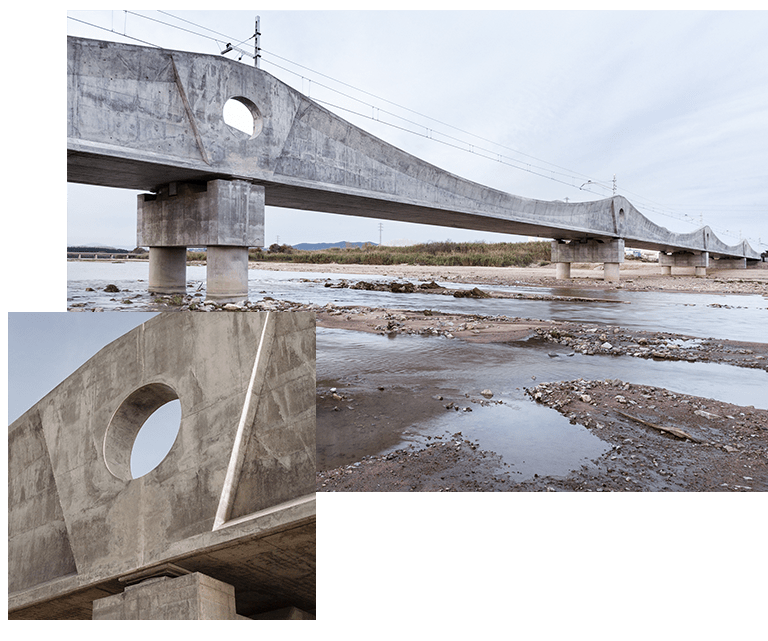

The Bridge over the Tordera River had two spans collapsed last January 22nd 2020 due to a river rise, consequence of the heavy rains produced by the storm “Gloria”. The Bridge, located between the train stations of Malgrat de Mar and Blanes, belongs to the railway line Barcelona – Mataró – Maçanet – Massanes.
Storm Gloria was an exceptional weather phenomenon with wind gusts exceeding 140 km/h and accumulated rainfall close to 200 liters, which caused the Tordera River to overflow, collapsing one of the Bridge piers (pier 4) and the two adjacent spans that leant on it (spans 4 and 5 out of 14 spans that the structure counted with).
Together with the railway bridge, the storm Gloria dragged the highway bridge belonging to the Generalitat of Catalonia, which was located just 30 meters downstream from the railway one.
The Bridge is located just two kilometers from the mouth of the Tordera River and marks the border between the provinces of Barcelona and Gerona.
Due to the emergency caused by the collapse, an analysis and diagnose phase was undertaken, which led to the conclusion hand in hand with ADIF of the need of replacing the existing Bridge by a new structure to increase its resilience against future climate impacts. Looking for a fast recovery of the railway operation, the project of this new bridge started just a few weeks before the initiation of the construction activities. Despite the complications of 2020, it was possible to complete the project, its construction and recover the operation in a record period of altogether just 8 months; thanks to the combined contribution of ADIF, Grupo Puentes as construction company, INECO and INES.
The new bridge over the Tordera River has got 221.30 m total length, distributed in five (5) spans (33.15 m + 51 m + 51 m + 51 m + 33.15 m). The post-tensioned concrete deck has a U-shaped cross section with two large lateral beams with variable depth rising above the platform in the shape of sails. The considerable reduction in the number of piers compared to the original bridge, added to the increase in the gauge of the deck over the channel, has significantly increased the bridge hydraulic capacity to meet the requirements towards future avenues of the Todera River marked by the local water management administration.
The piers, in turn, are pier-pile type (2 piles per pier). Their foundations reach a depth of 40 m, while the bridge deck rests on the opposite side over the piers head. This solution seeks eliminating future scoring problems that the original bridge had, avoiding at the same time excavations under the water table level for building a hypothetical pile cap, what enabled speeding up the construction process.
